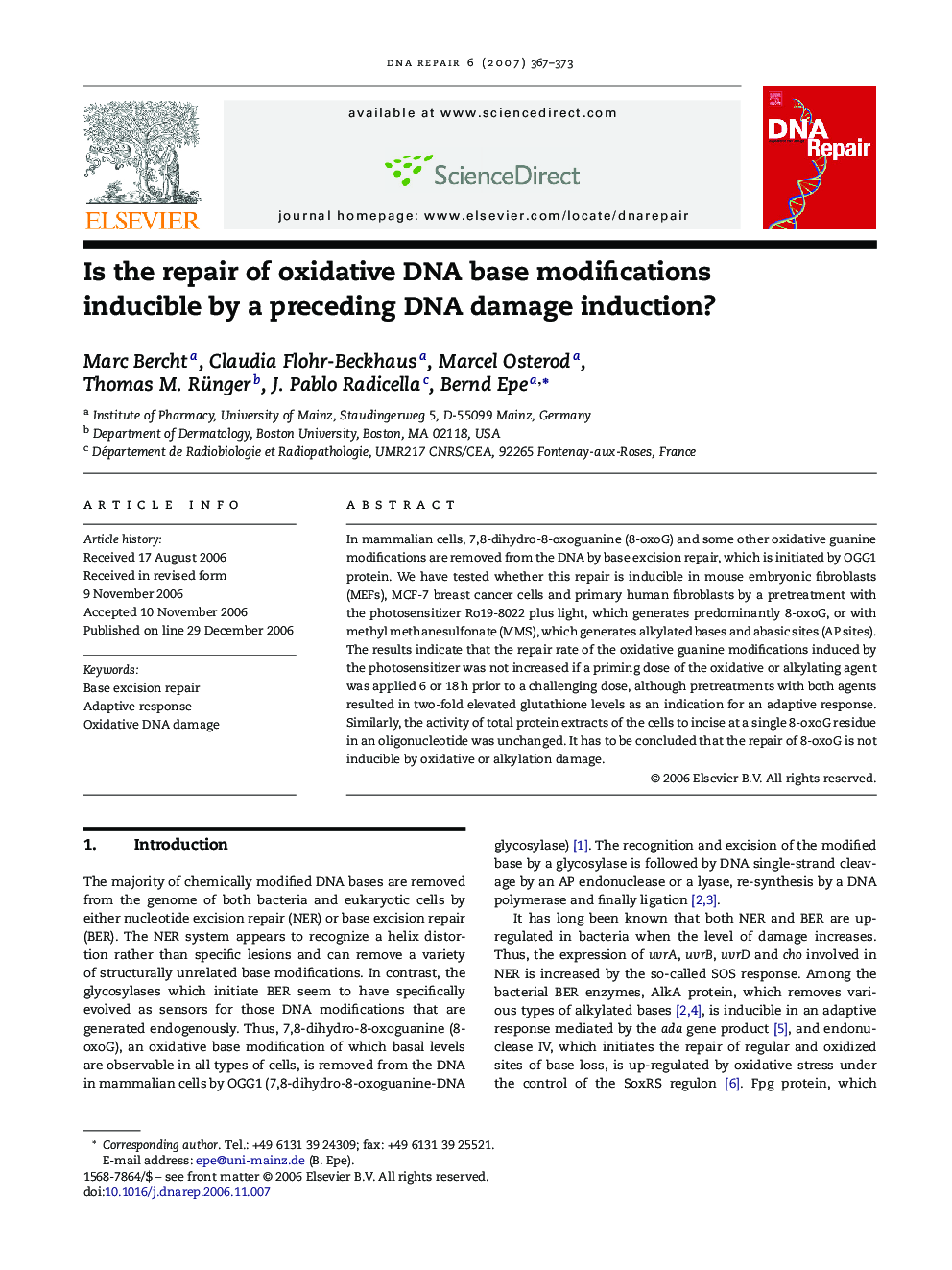| Article ID | Journal | Published Year | Pages | File Type |
|---|---|---|---|---|
| 1981039 | DNA Repair | 2007 | 7 Pages |
In mammalian cells, 7,8-dihydro-8-oxoguanine (8-oxoG) and some other oxidative guanine modifications are removed from the DNA by base excision repair, which is initiated by OGG1 protein. We have tested whether this repair is inducible in mouse embryonic fibroblasts (MEFs), MCF-7 breast cancer cells and primary human fibroblasts by a pretreatment with the photosensitizer Ro19-8022 plus light, which generates predominantly 8-oxoG, or with methyl methanesulfonate (MMS), which generates alkylated bases and abasic sites (AP sites). The results indicate that the repair rate of the oxidative guanine modifications induced by the photosensitizer was not increased if a priming dose of the oxidative or alkylating agent was applied 6 or 18 h prior to a challenging dose, although pretreatments with both agents resulted in two-fold elevated glutathione levels as an indication for an adaptive response. Similarly, the activity of total protein extracts of the cells to incise at a single 8-oxoG residue in an oligonucleotide was unchanged. It has to be concluded that the repair of 8-oxoG is not inducible by oxidative or alkylation damage.
